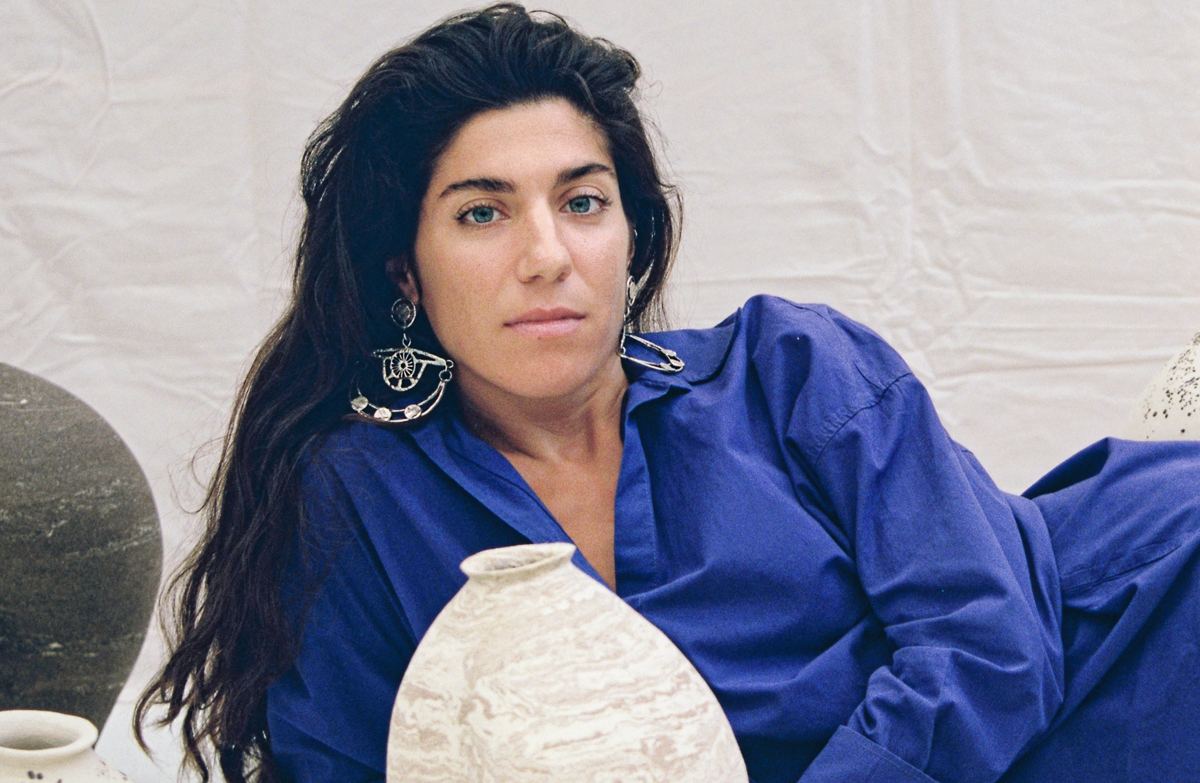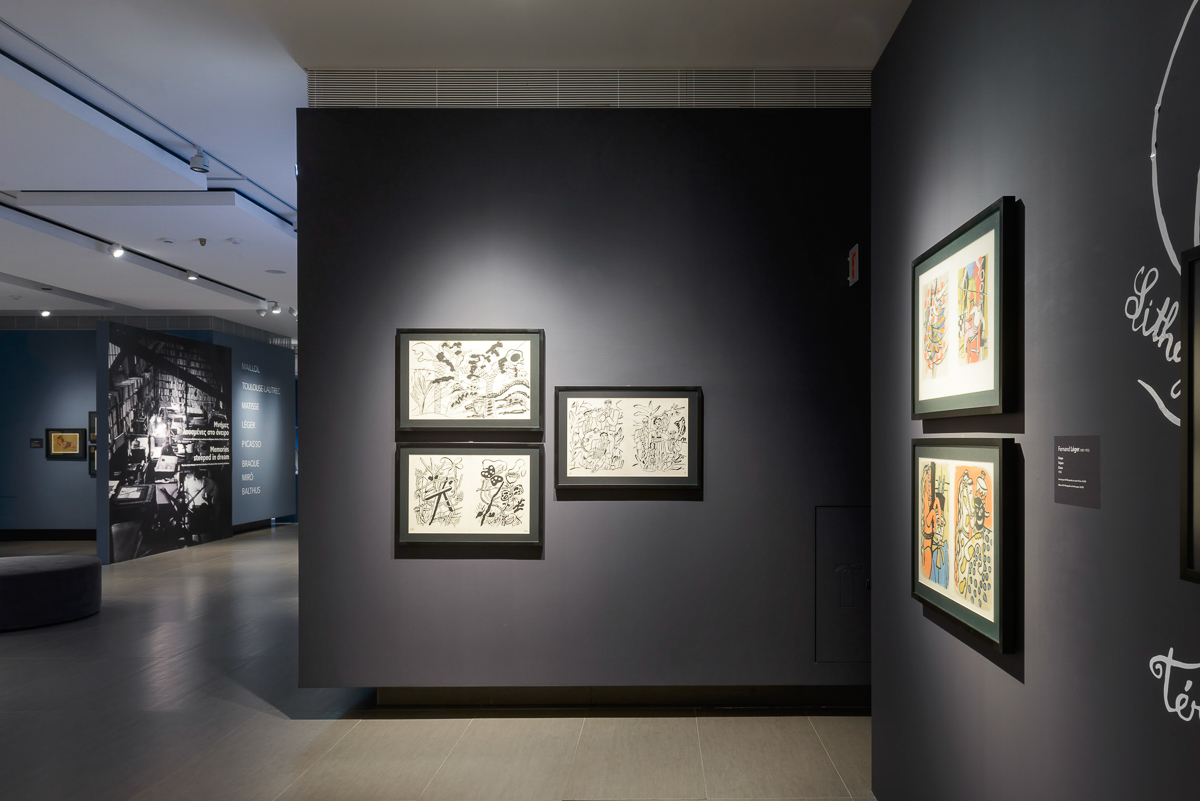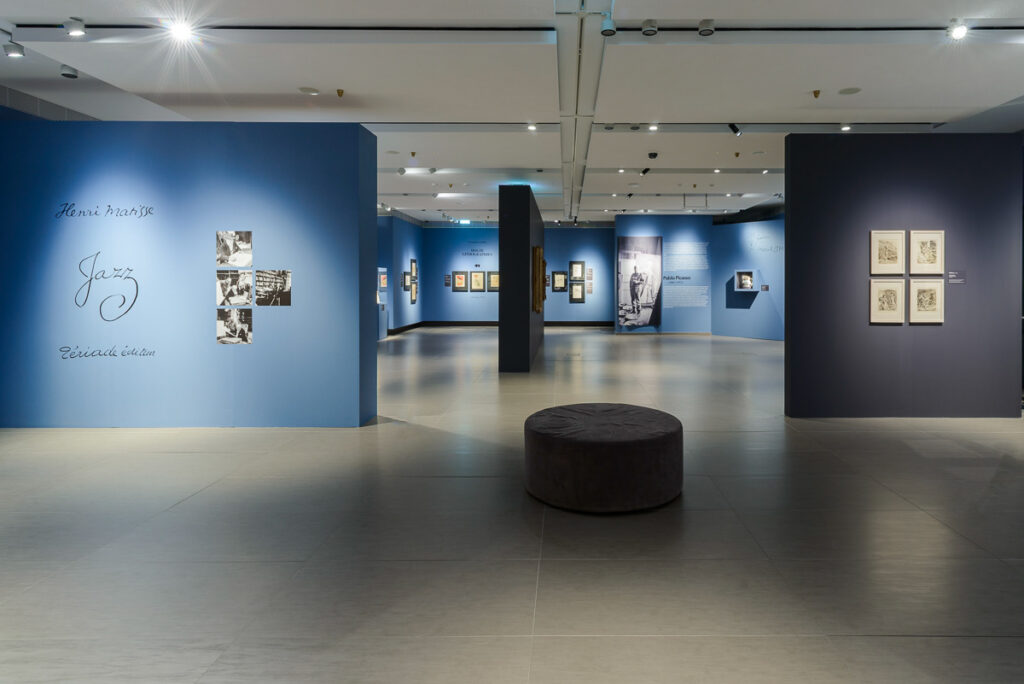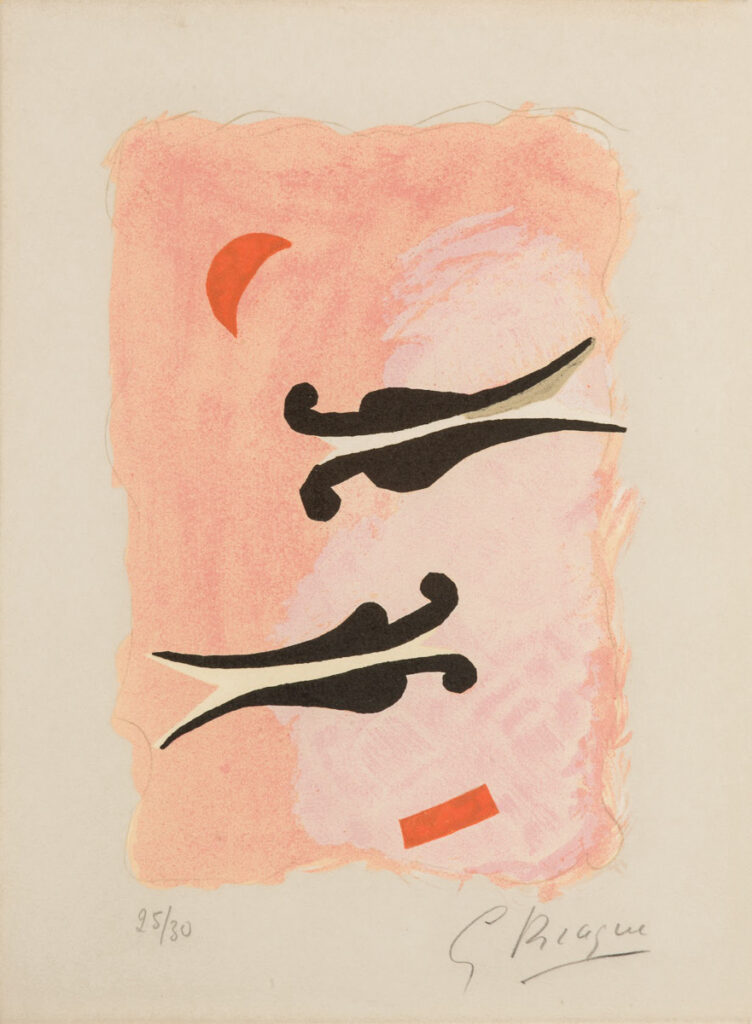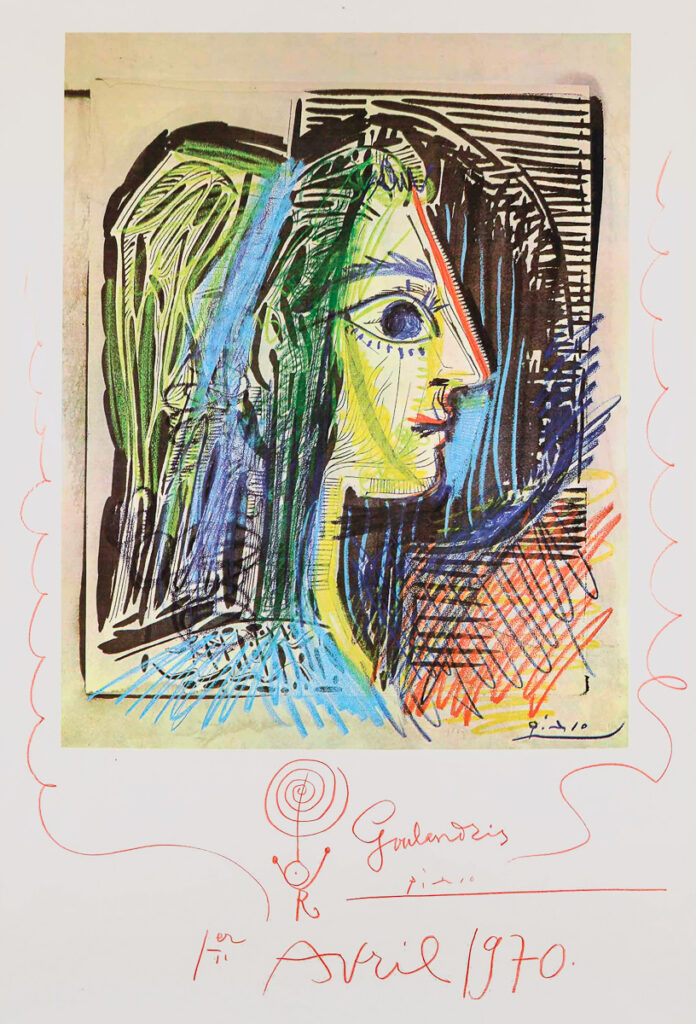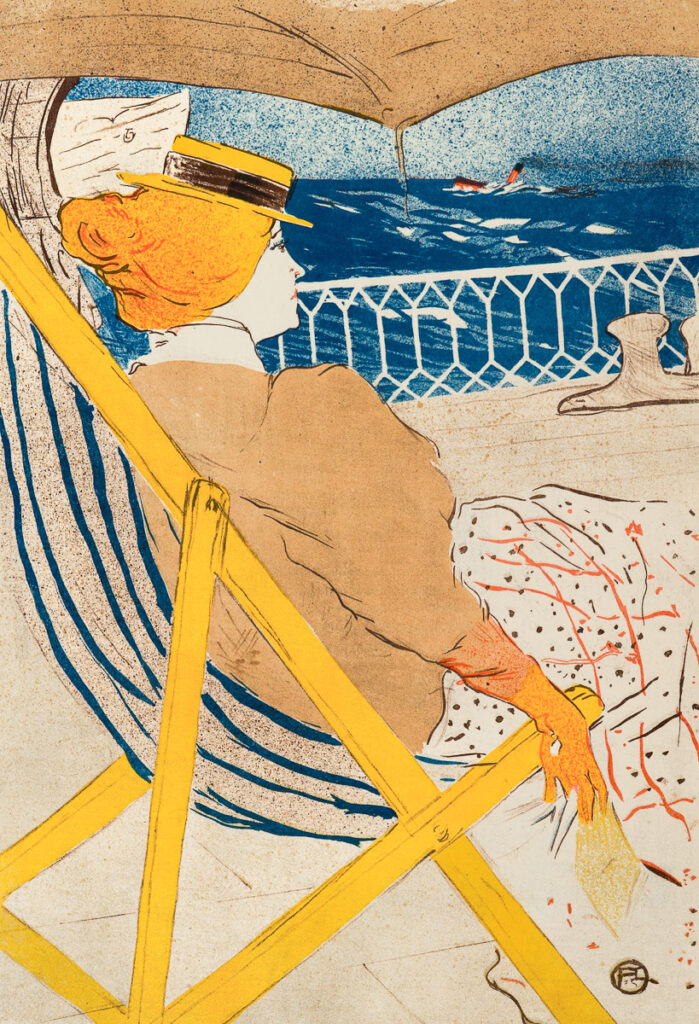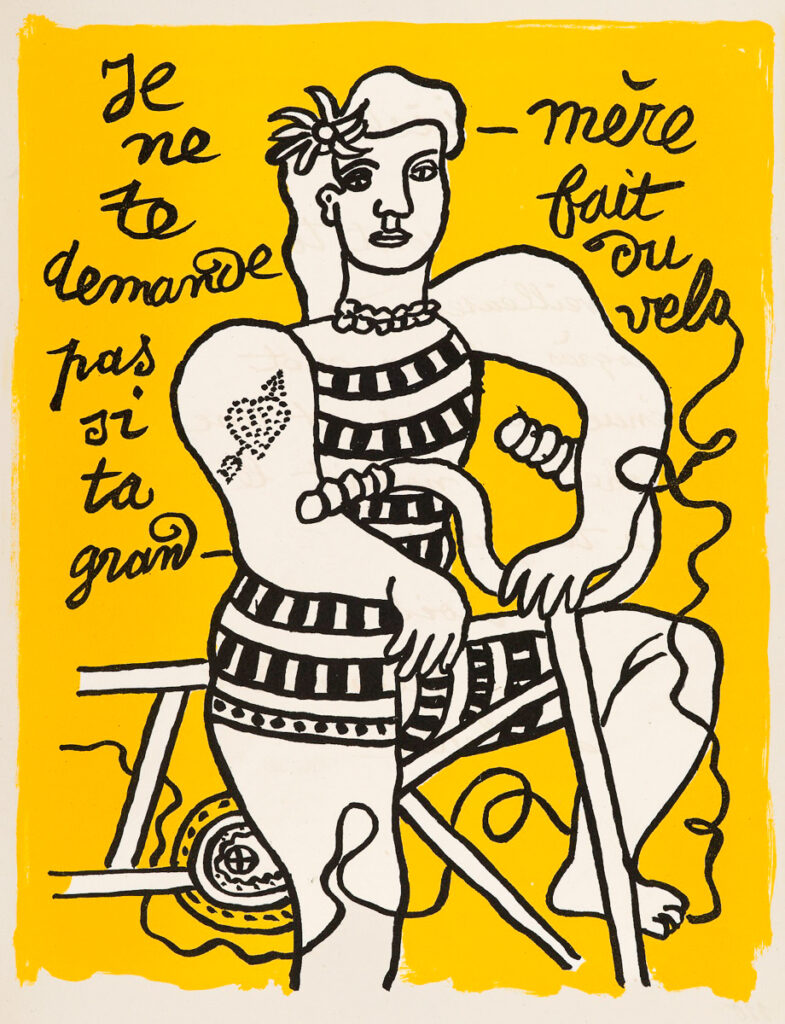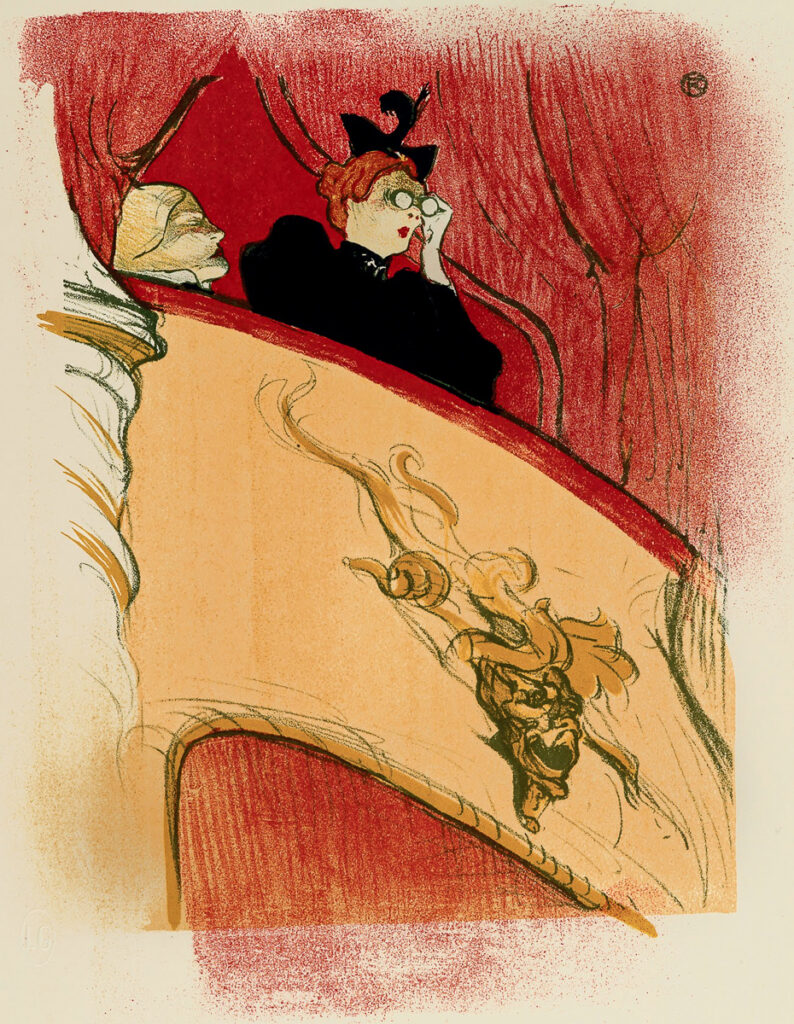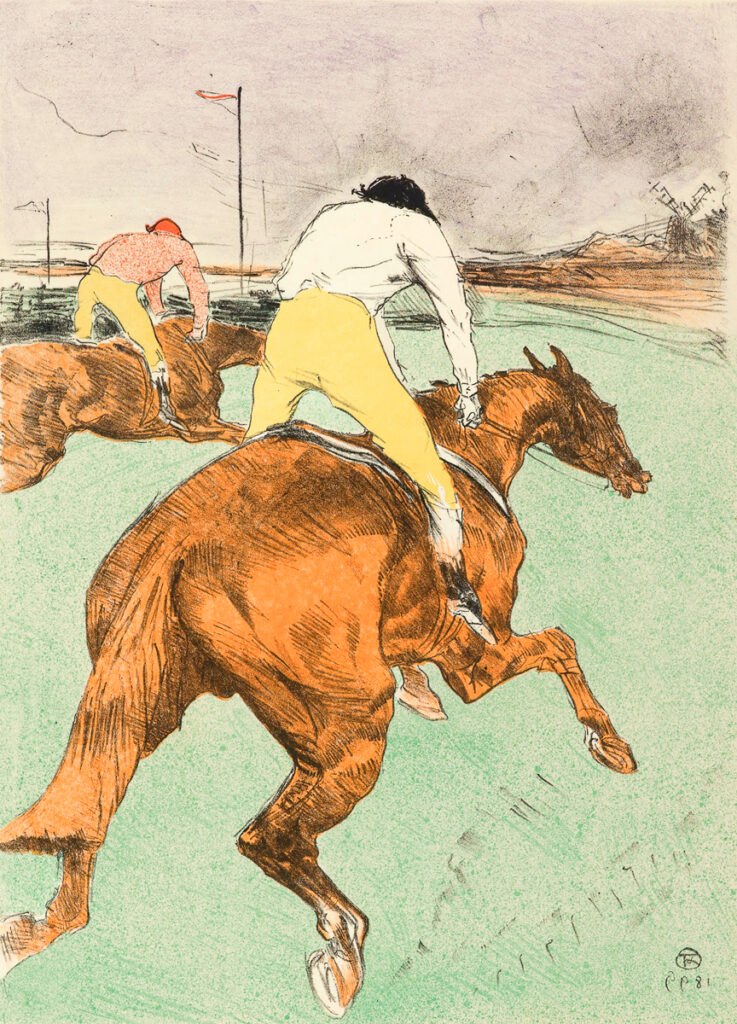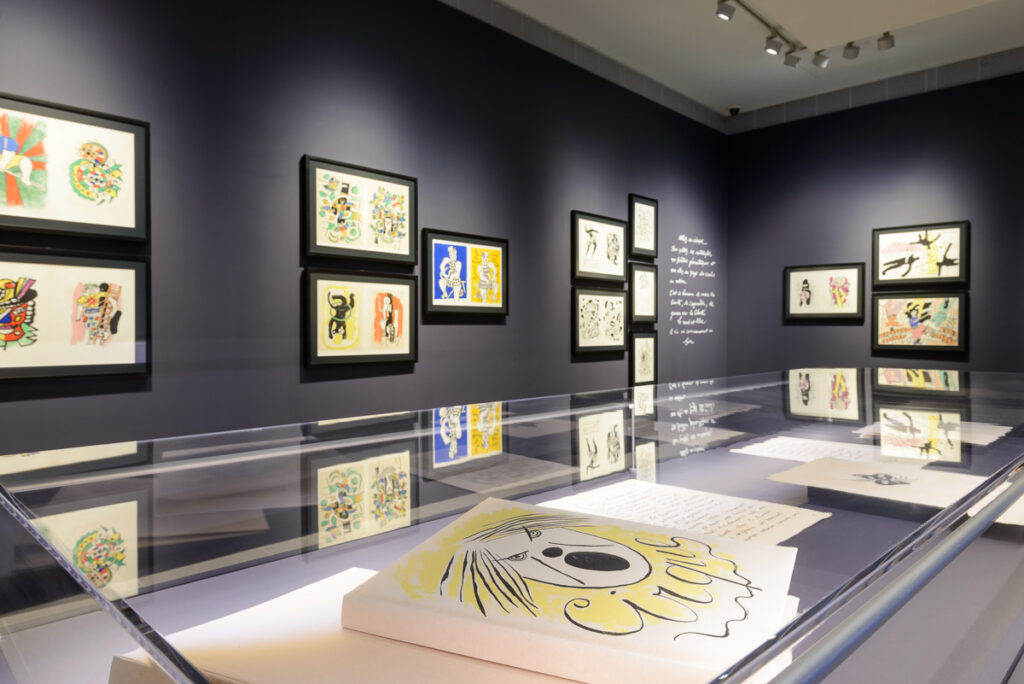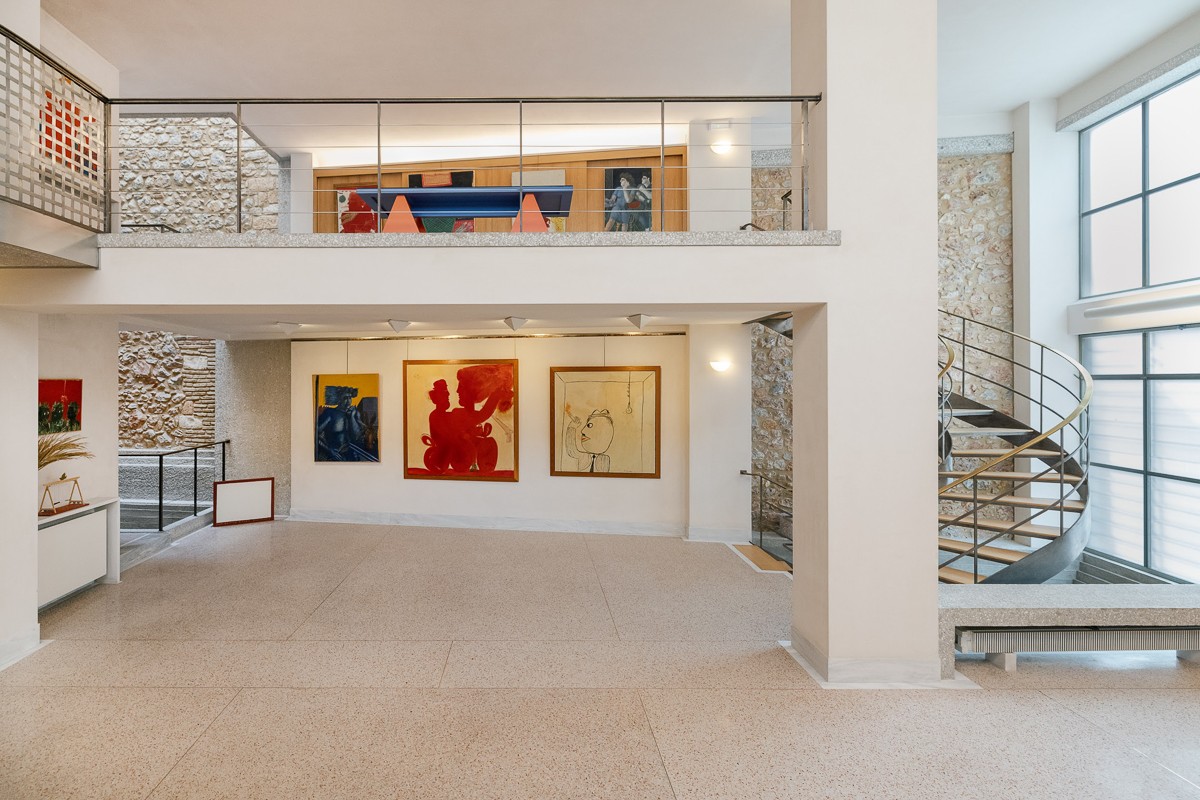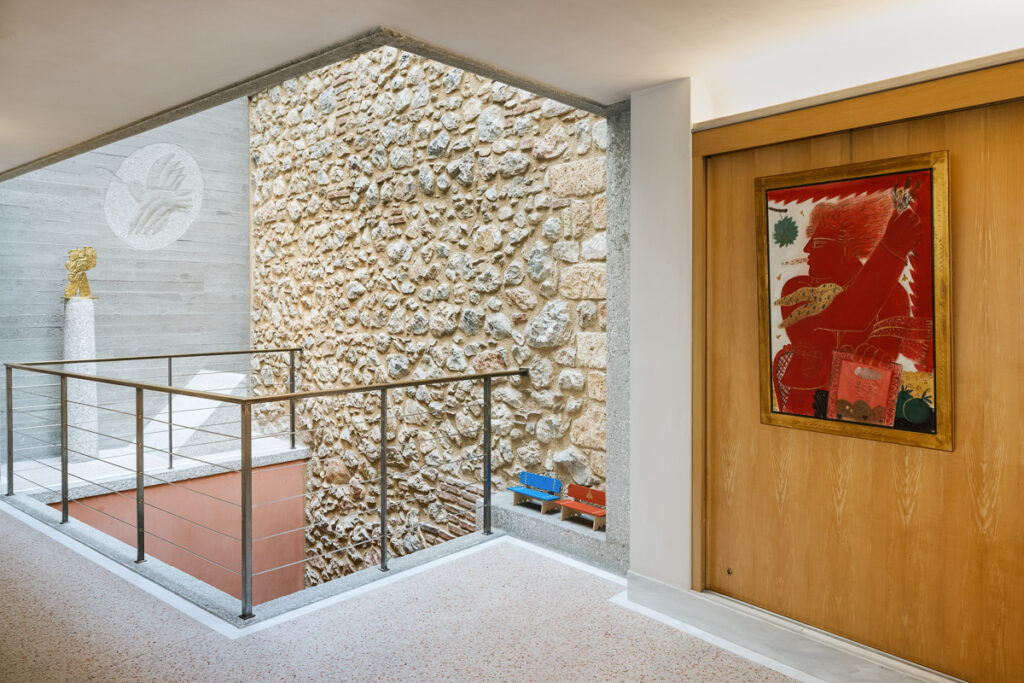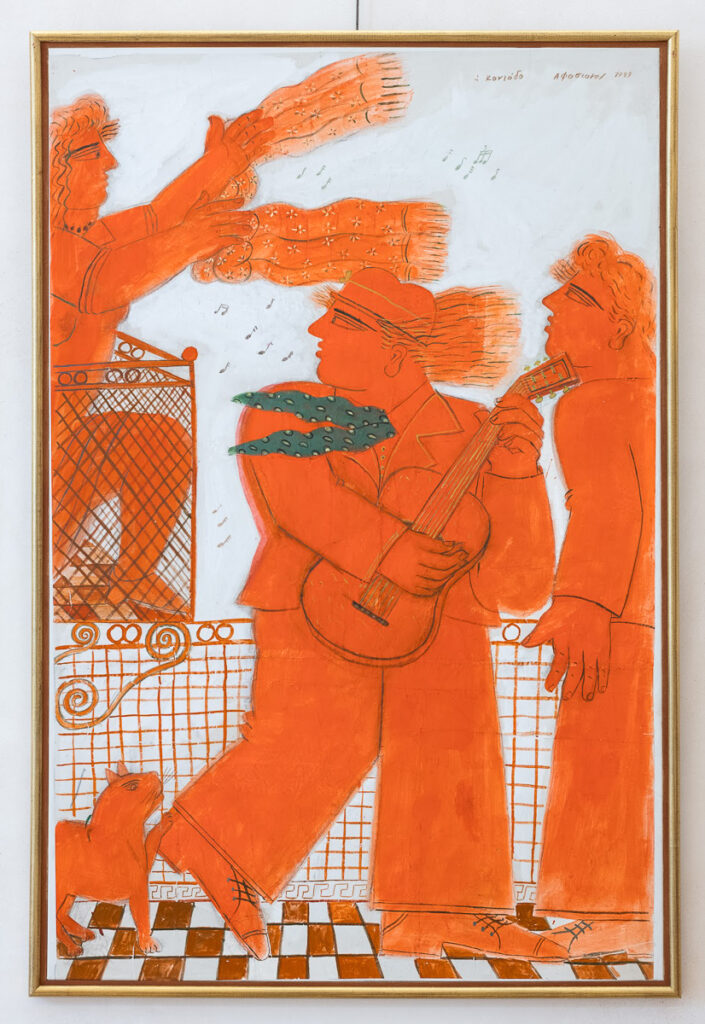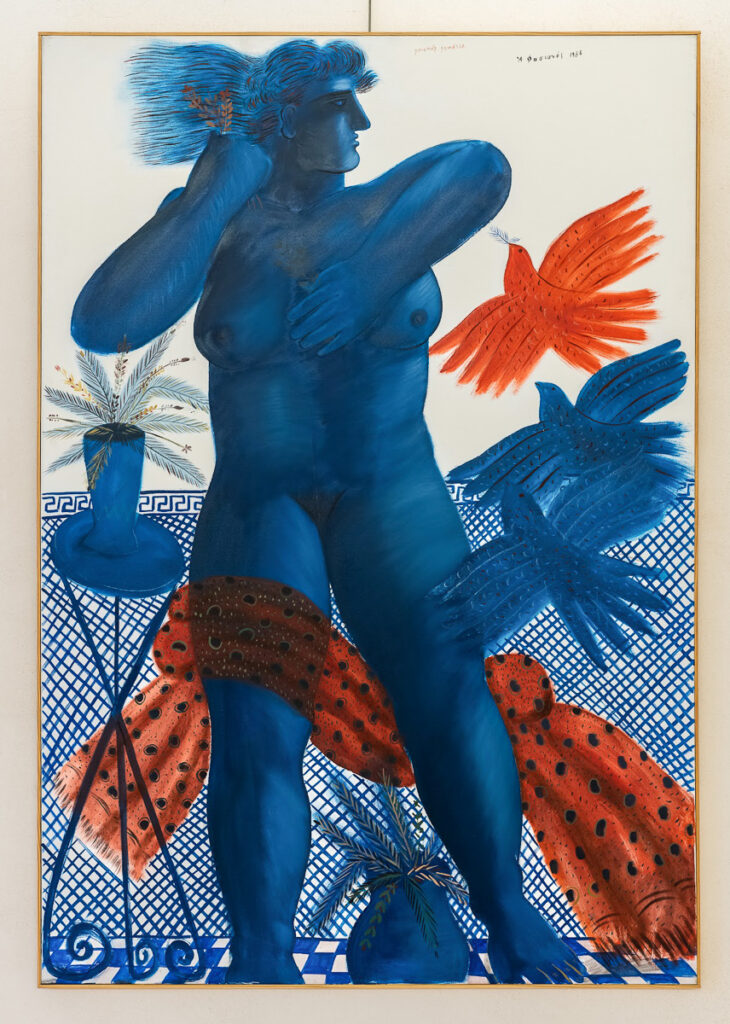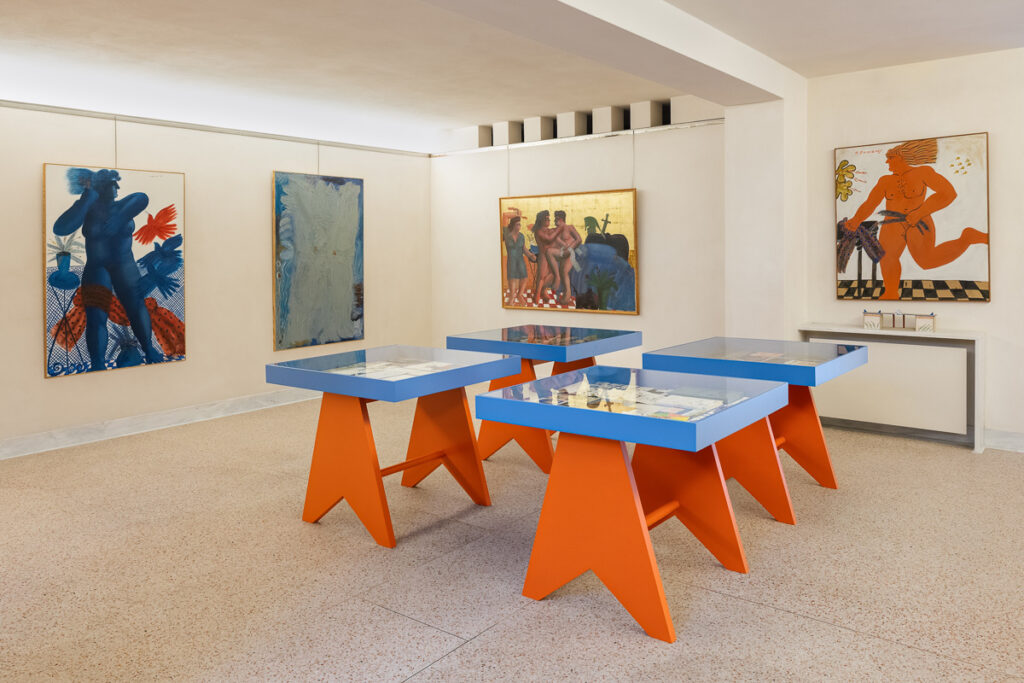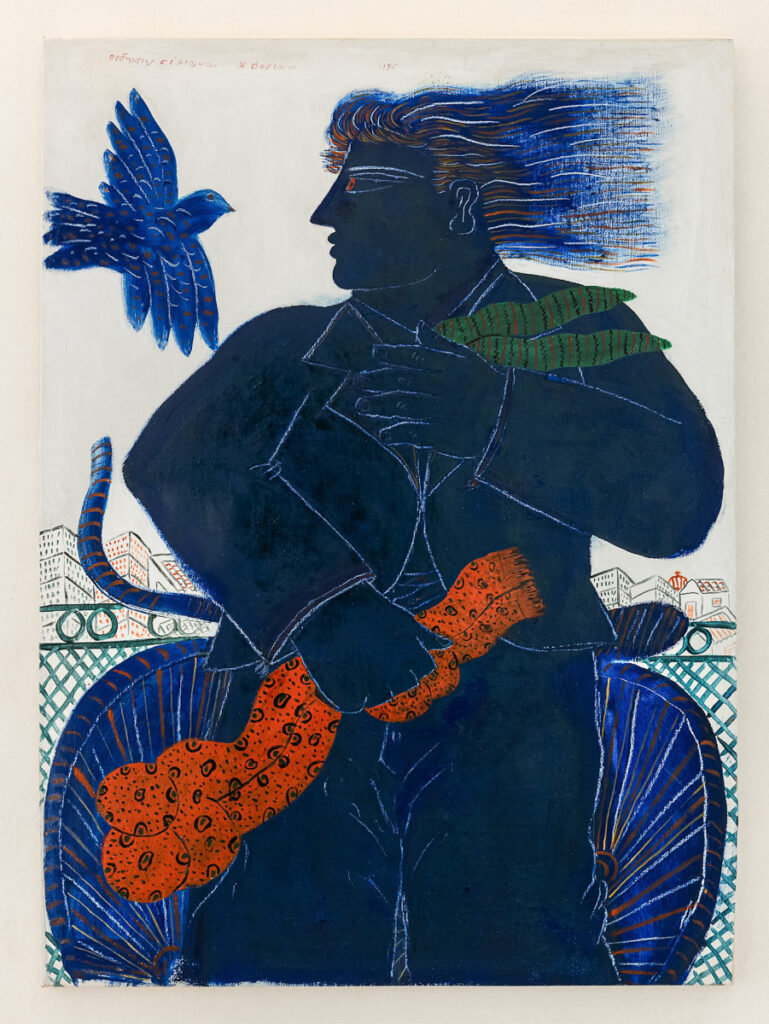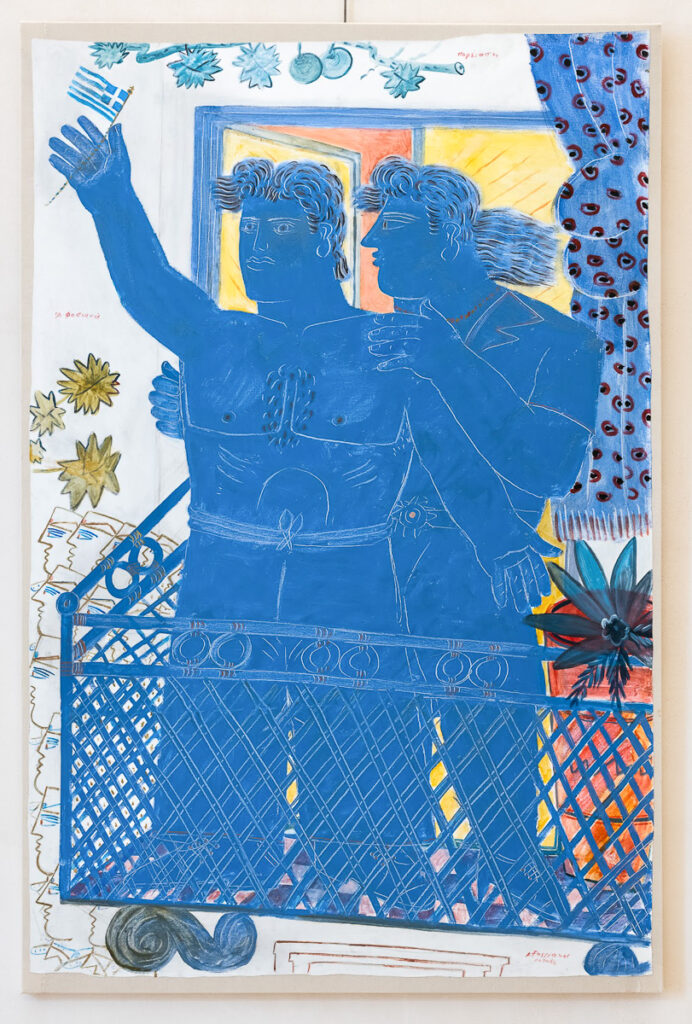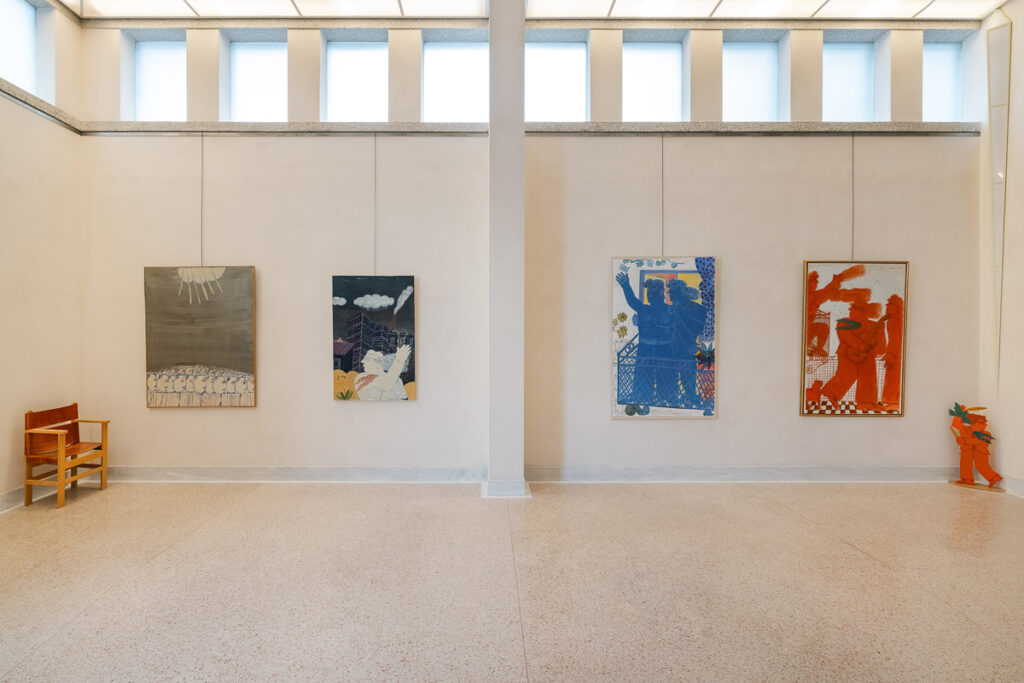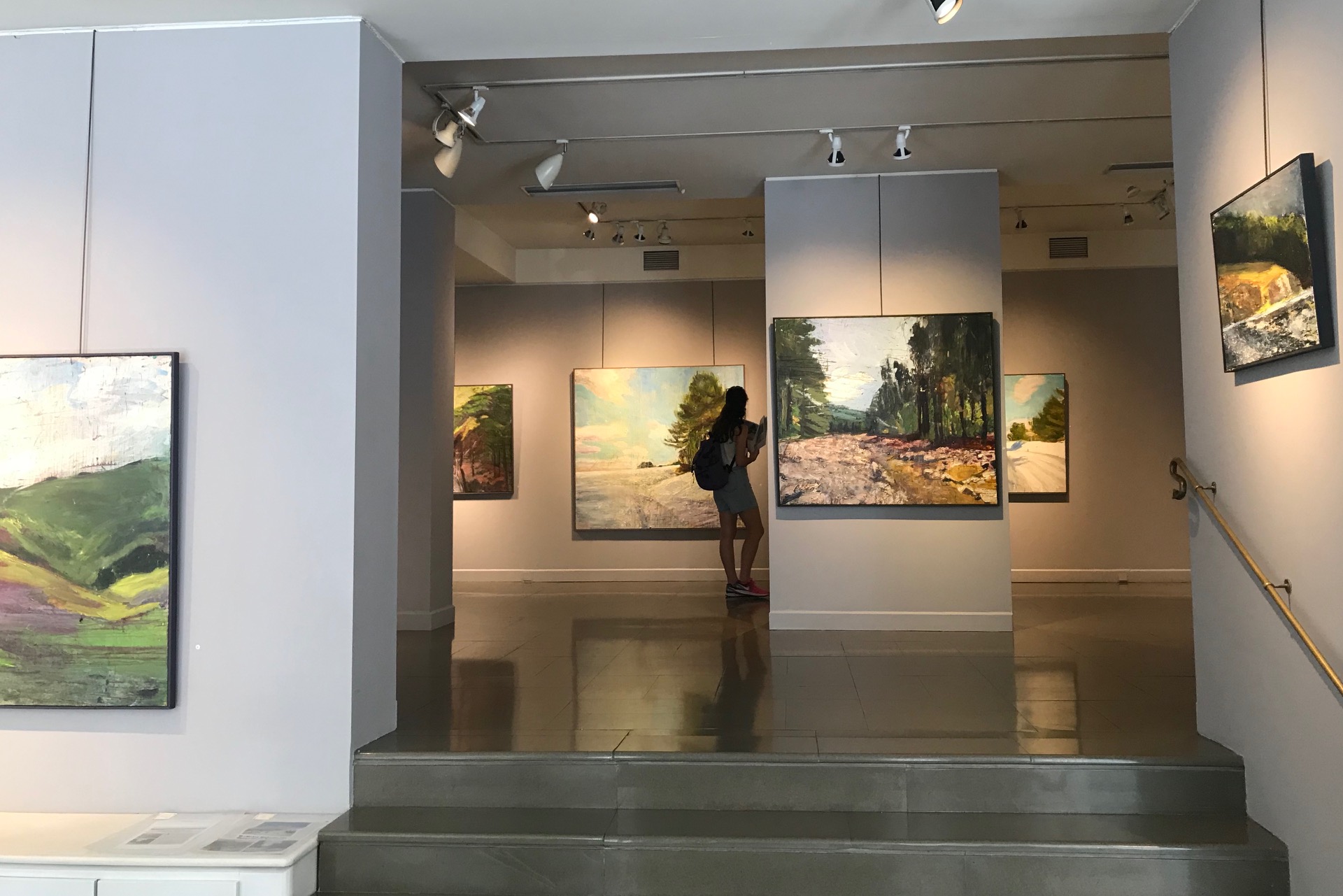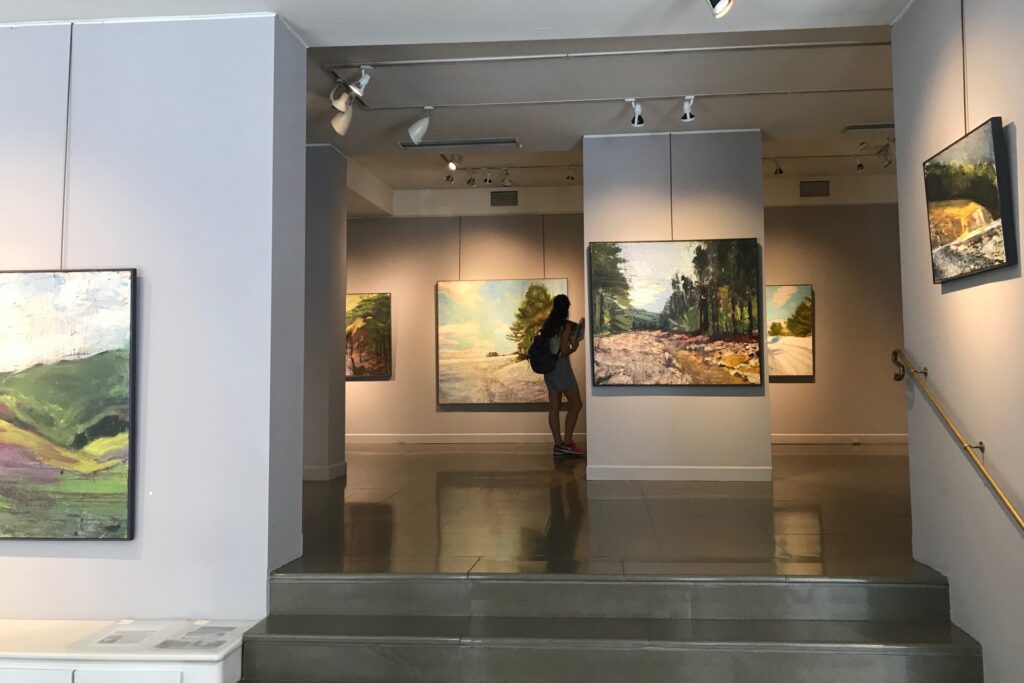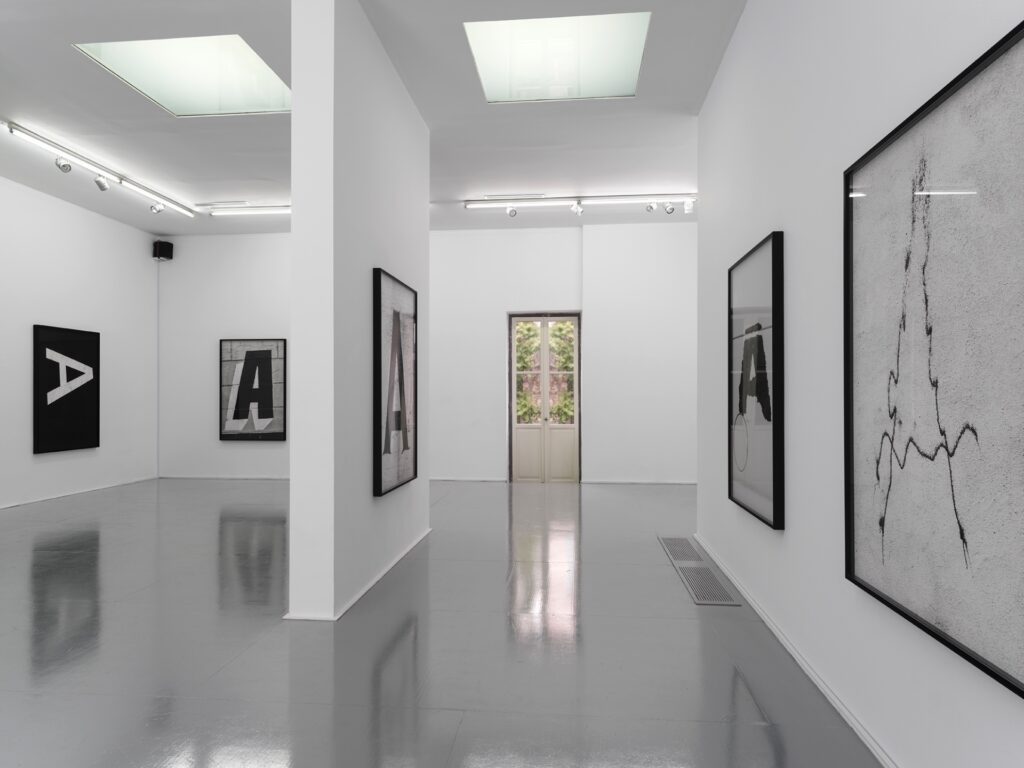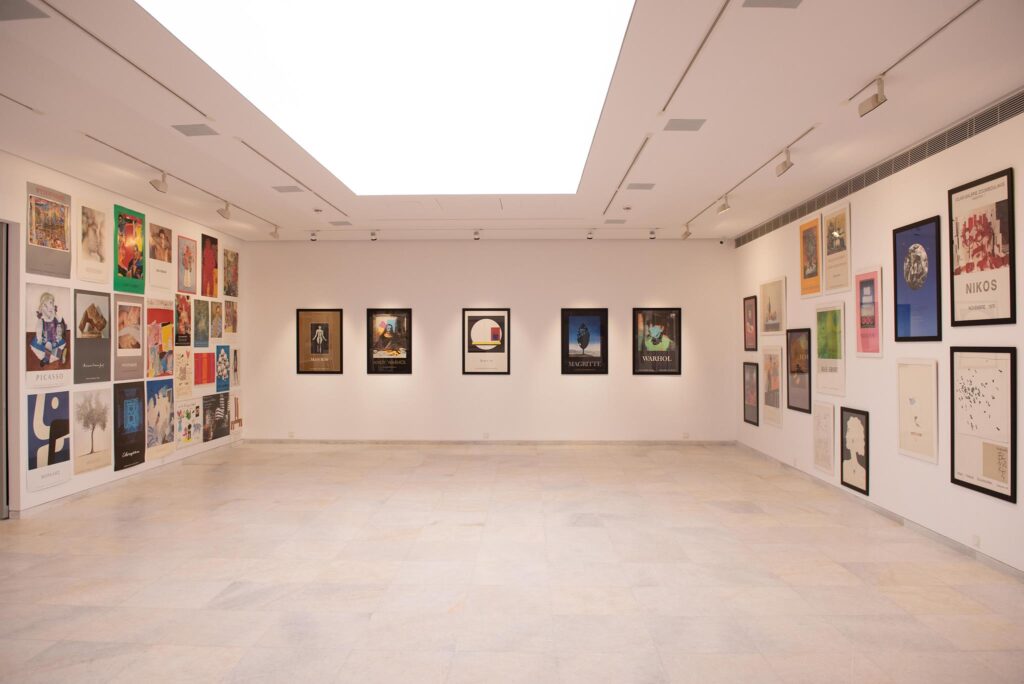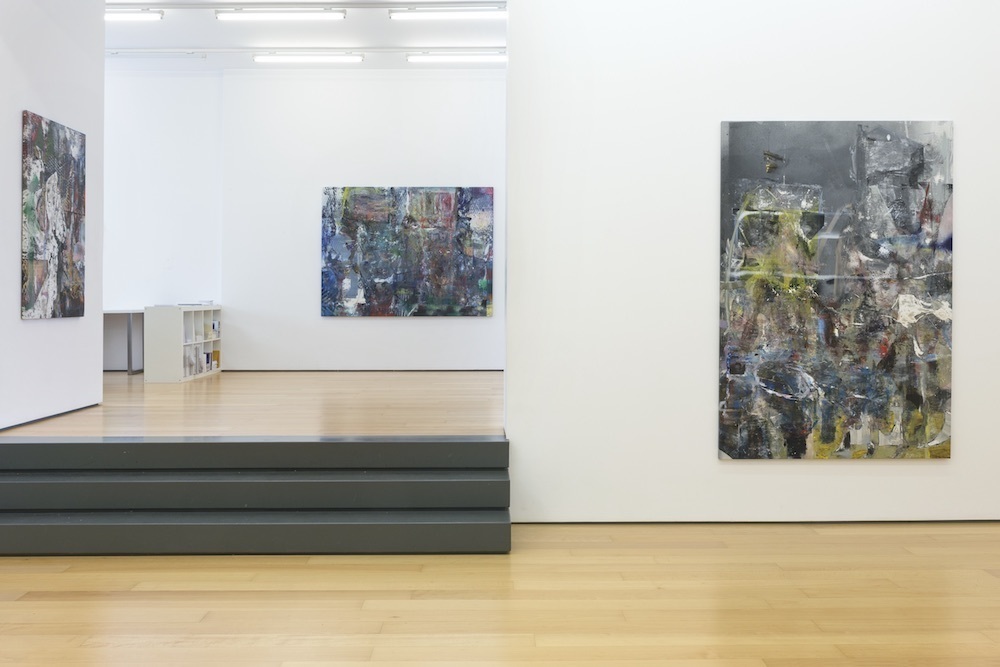Creating extraordinary and interesting work, ceramicist Anna Karountzou is proving that this ancient craft deserves to be recognised as one of today’s most exciting art forms.
Originating from Athens, Anna crafts refined ceramic vessels and other creations that feature a raw yet graceful aesthetic, drawing inspiration from ancient cultures and the natural world.
With a background in conserving art and antiquities, she transitioned her focus from preserving to shaping and manipulating clay, driven by a burgeoning fascination with material science.
Employing traditional methods like coiling and pinching, her distinctive handcrafted pieces are imbued with a sense of place that resonates with Anna’s connections, paying tribute to the earth while embracing a contemporary sensibility.
We recently had a chat with Anna about her unique pieces, as well as her love of Santorini and travelling the world.
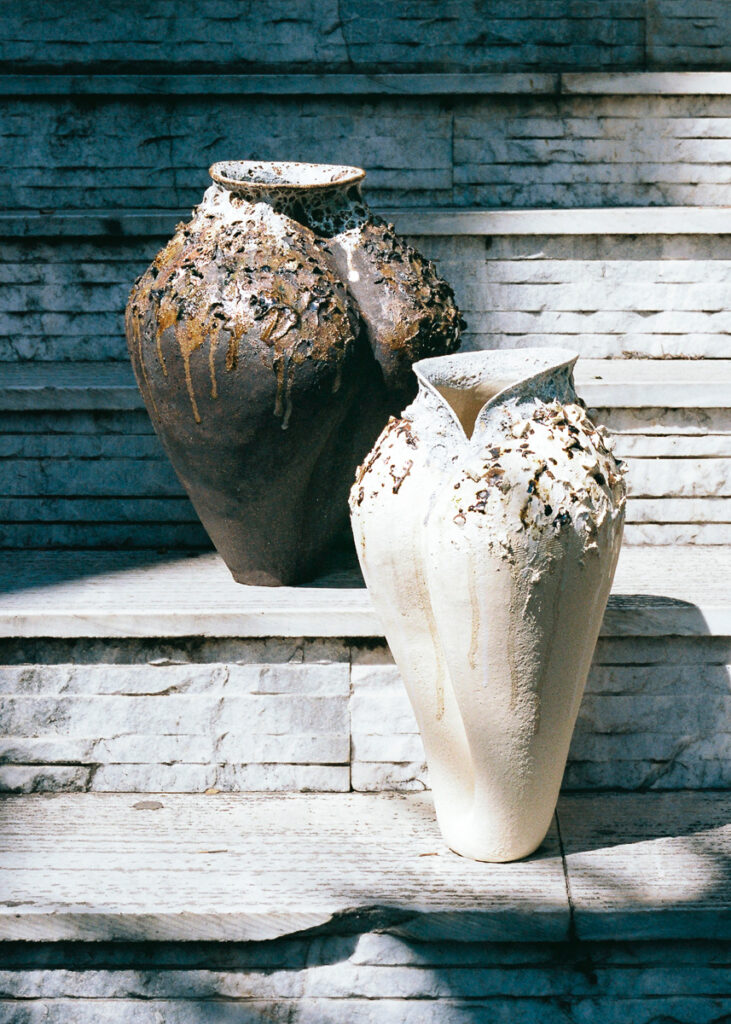
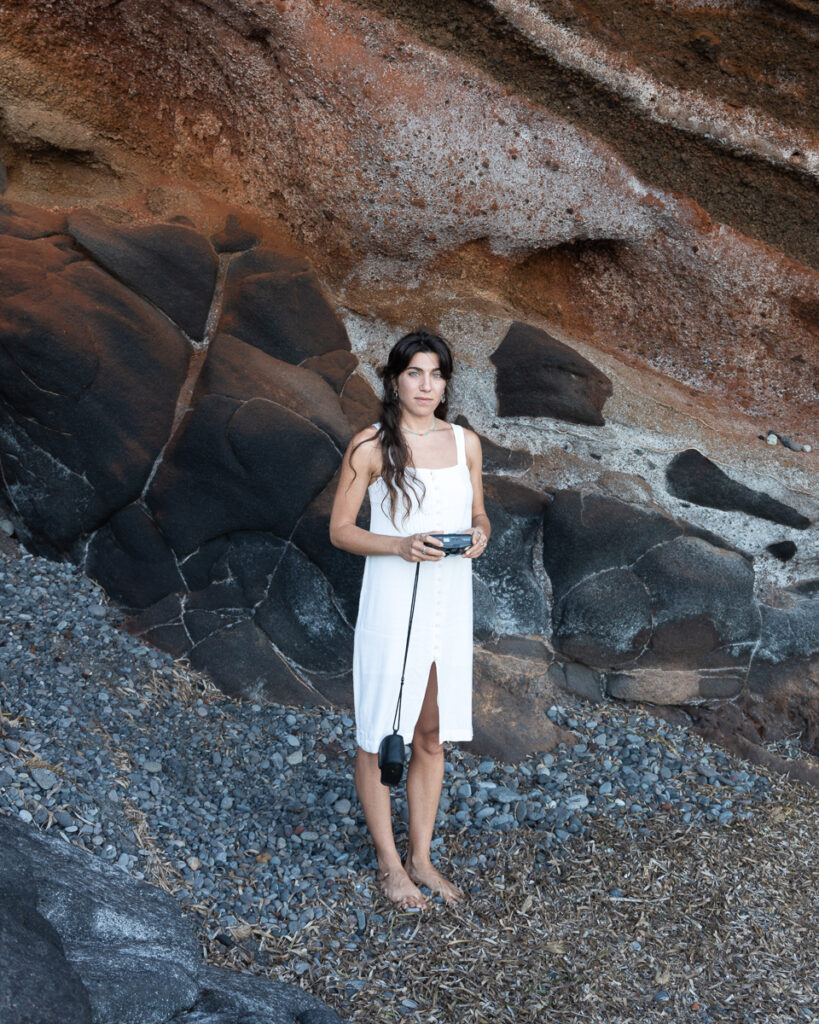
Tell us a little about your background and training in ceramics.
I have always dabbled in art. As a child, I started drawing and ended up studying conservation of antiquities and works of art at the University of Athens, a profession I followed for several years. My studies and the knowledge I gained at school were great. Through conservation, you gain an excellent understanding of works of art but at the same time, you have no freedom to create. You follow the rules, ideologically and techniques of another artist. I enjoyed it but missed the fun of creating, which came after I started ceramics classes at the Museum of Modern Ceramics.
Then I studied glazing with one of the greatest living ceramicists, Menandros Papadopoulos, and that was when I broadened my horizons considerably. When I started I pretty much followed the work pattern of the conservator, which is set in absolute detail and symmetry. Years passed and I was finally freed from the strict rules. I allowed my hands to create irregular shapes and sizes of sculptures. Now, each object has its character and its essence.
When did you start your brand workshop and what was the idea behind it?
During quarantine, alongside my job as a conservator, I began to work more intensely with ceramics. Somewhere along the way, I decided to find a space to work and store the now countless objects I had created. I set up shop at my grandfather’s warehouse in the Drosia area of Athens and devoted myself to it. For a year I worked Monday to Friday as a conservator and on weekends, I spent 12 hours working with clay. I was lost in creating, and had so much passion for it that I wasn’t tired. I couldn’t wait for the weekends to arrive.
I then decided to give up my job as a conservator and concentrate on ceramics. My friends urged me to start an Instagram page and I received a flurry of messages from art venues to collaborate and participated in Milan Design Week, where I met another ceramicist with whom we collaborated and housed our creations in a common space in Kolonaki. My work was going surprisingly well and one collaboration led to another. The amount of work was huge, so I had to find my own space. During one of my walks in the area, I found this abandoned basement. I renovated it all by myself, and not only did it become my workshop but my second home.
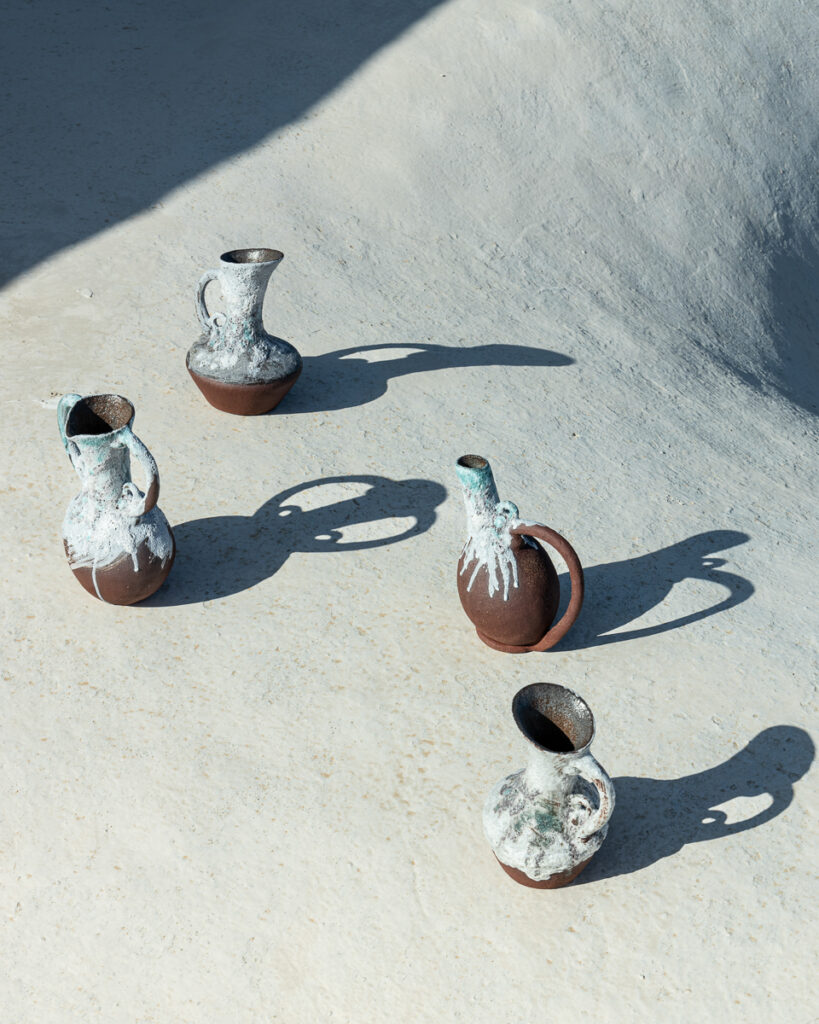
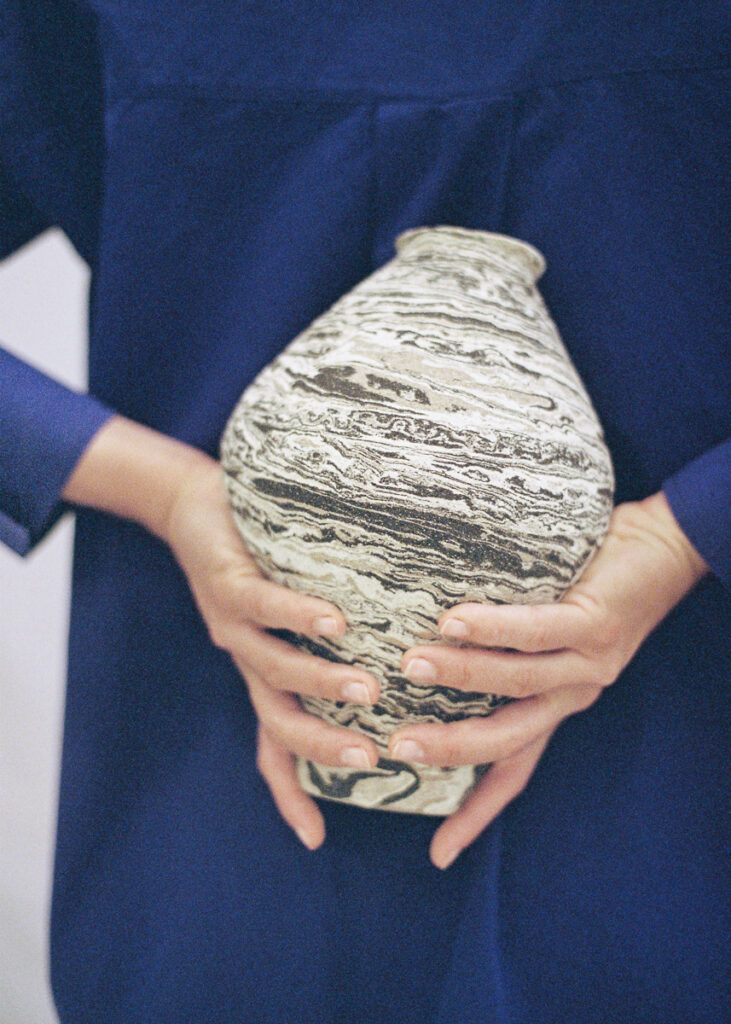
What inspires your creations?
My memories and many moments of my life inspire my creations. My summers in Santorini have also marked me. Additionally, I am inspired by rebirth, and the fact that we can create something new from our “ashes”. I experiment a lot with the same materials and “rebirth” them.
How would you describe your pieces?
Free and formless. I don’t plan anything ahead of time. Through the creation process I break the boundaries, the rules. None of my creations are symmetrical, each object I create has its entity and character. I also like that my creations are aesthetically related to Ancient Greek culture and nature. I would describe my pieces as natural, with curves referencing the female body. I also like to capture the mark of time and for my pieces to look rustic and worn. I prefer the aesthetic of natural wear and tear. But I don’t do it consciously, I start creating and it just happens organically. Unconsciously I design objects that create a feeling of nostalgia.
Who are the pieces created for?
I never think of creating for a specific audience. I create things for myself first, to express something deeper and my nostalgia is reflected through my creations.
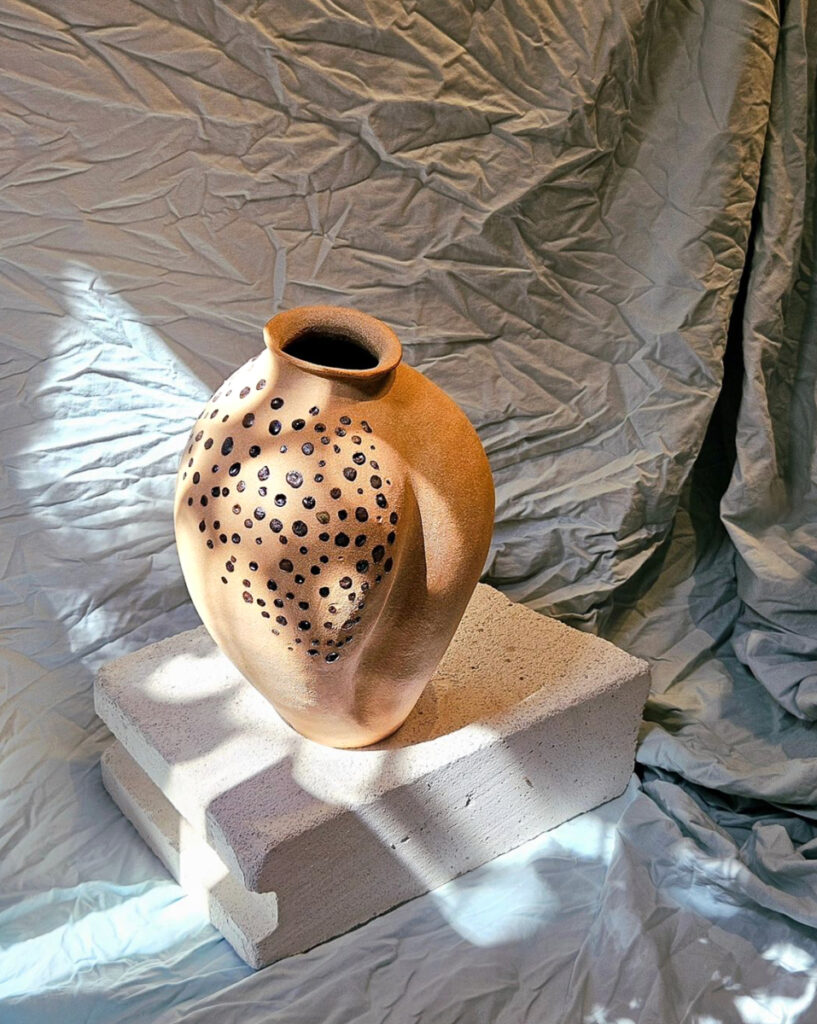

We have seen that you love to travel, tell us about the trip that has inspired you the most.
I’ve been fortunate to visit many places that have taken my breath away. For four years I worked as a restorer and lived like a nomad. Along with my team, we visited and maintained temples and monuments all over Greece, from the north to the south. We have preserved temples in remote villages in Thrace and Macedonia, to ancient tombs and Herod’s mansion in the Peloponnese. We stayed at each place for months, became friends with the locals and really discovered their beauty.
I strongly believe that we live in a stunning country and every trip in Greece has been inspiring, allowing me to draw elements that I incorporate into my ceramics. Each community and city has its character and natural beauty – especially when it’s near a mountain or the sea. I will certainly remember the months I lived and worked in Chania, as Crete’s a gorgeous place to visit. And I also have to mention my most recent trip to Nepal, that touched me thanks to the many spiritual and genuine people I met.
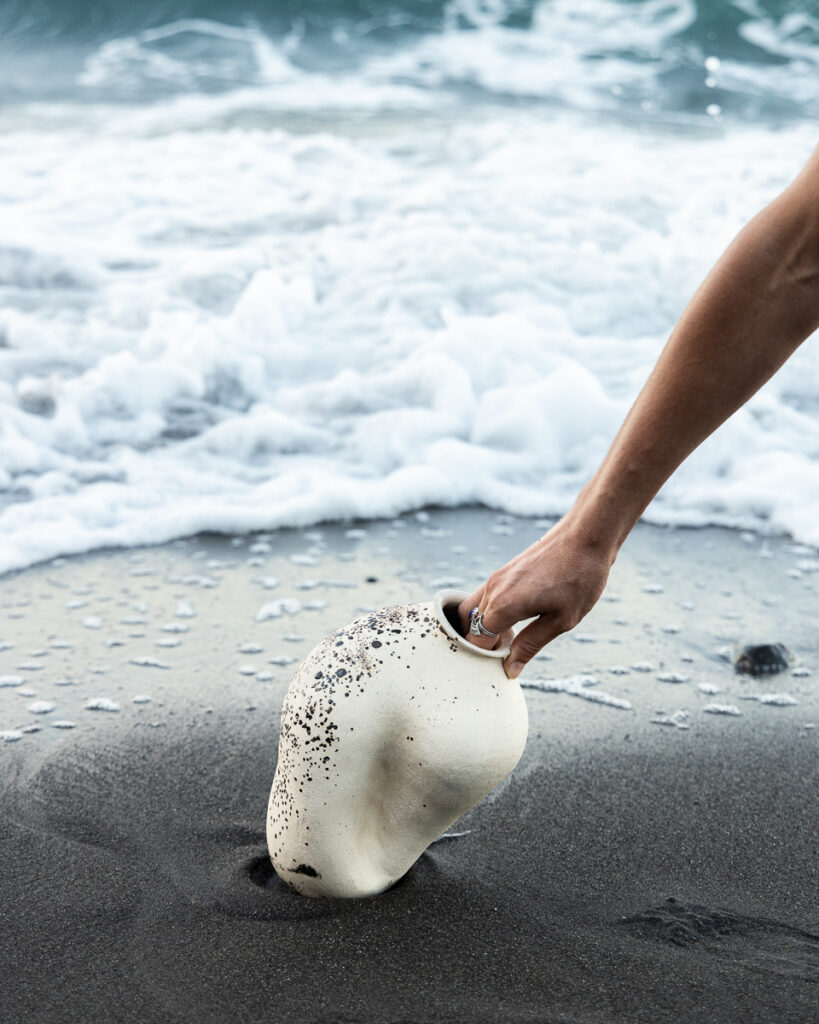
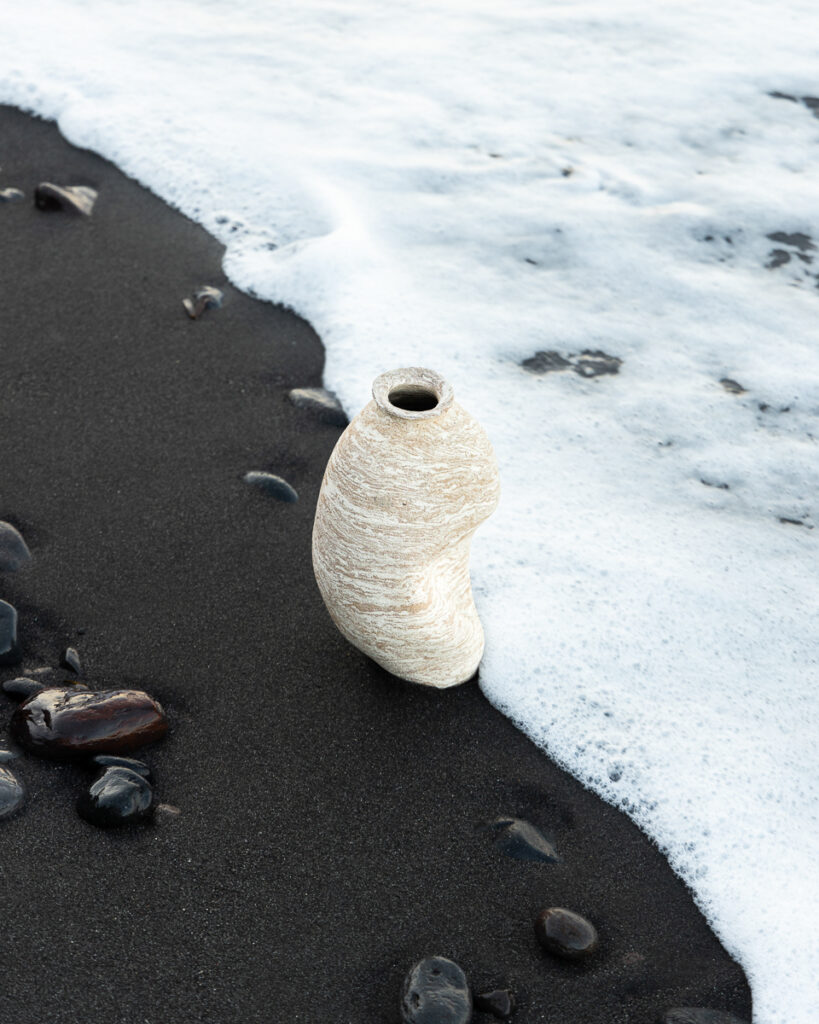
What place in Greece inspires you the most?
Santorini, my mother’s island home. Especially Oia, which is where I spent all my childhood summers. Unfortunately, the Santorini of that time has nothing to do with that of today, but I have preserved all my lovely memories from the past. The volcano, the cliffs, the rocks, the beaches, the sea – this freedom we felt when we ran around the streets and beaches are all fond memories that will remain an inspiration for my creations. I have asked wine producers for ash from the vines in Santorini to create a unique glaze on some of my ceramics and I have also incorporated fragments of volcanic rock in others. Santorini is a part of me and the creations I produce.
With a workspace in the centre of Athens, tell us a few of your favourite places in the city.
My current workshop space is a spot where from the first moment I entered the semi-basement in the heart of Kolonaki, I felt an energy that this is where I’m meant to be. I love Kolonaki, especially around my workshop because it’s quiet, the streets are lined with trees, and we are close to the beautiful Dexameni Square, with an amazing panoramic view of the hills of Athens. At the same time, I also like areas that feature the character and style of an old-school Athens, such as the neighbourhood of Petralona, where I live. I wouldn’t change it for anything.
A: 13 Deinokratous St, Kolonaki

